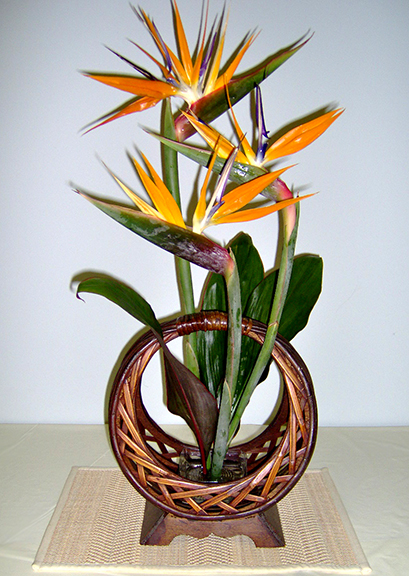 Ikebana International Chapter 182 - Annual Exhibition and Tea
Ikebana International Chapter 182 - Annual Exhibition and Tea
April 18, 2012 noon - 4 pm
Garden Club Council Building
1605 Park Circle at Maxcy Gregg Park
Columbia, SC
An exhibition and demonstration of the Japanese style of flower arranging called Ikebana, loosely translated as “the way of flowers” will be held by Chapter 182 of Ikebana International on April 18, 2012. Ikebana International was founded in 1953 - its motto is “Friendship through Flowers.” Last year we had forty arrangements, plus sand gardens and miniatures, as well as educational exhibits to the delight of nearly 200 attendees. The suggested donation is $3 and in 2011 all proceeds from the event were donated to the American Red Cross for the benefit of the victims of the devastating earthquake and tsunami in Japan.
Locally we exhibit each year at the State Fair, The Columbia Museum of Art, and the SC Orchid Show at Riverbanks Zoo. But this is our chance to share many more examples of our creations with the public. Our local chapter received its charter in 1974. The members of the Ikebana chapter feel a close connection to Japan, as many have lived there as military wives, have come from the Pacific Rim, or have studied the Japanese culture. At 1:00 pm we will introduce the principal speaker, Norman Churchill who will give a lecture and demonstration of the Sogetsu School, one of the more than 3,000 distinct schools of Ikebana. Sogetsu emphasizes the sculptural qualities of the arrangement. After a question and answer period, the attendees are invited to enjoy a buffet style tea that will include Japanese sweets and Asian dishes made by our members.
Reflection on and appreciation of Japanese culture is evident in the beautiful arrangements, some of last year’s display are pictured here. The arrangements represent several schools of the art of Ikebana, including traditional or alcove style examples of the Ikenobo School, established in 1486; natural and landscape styles of the Ohara School, established in 1897; sculptural and free style Sogetsu, dating to 1925; and the painterly or spontaneous style of Sangetsu, a relatively newer school established in 1972.
With the theme “Baskets and Beyond”, and focusing on the use of basketry and bamboo in the arrangements, participants will reveal design characteristics of the craft, which include the importance of shape, line and form, often employing a minimal number of blooms interspersed among stalks and leaves. Whether traditional or modern, the varying forms of Ikebana share certain common features, regardless of the period or school. Many types of plant material – branches, leaves, grass, moss, fruit and flowers -- may be used. Withered leaves, seedpods and buds are as highly valued as flowers in full bloom. What distinguishes Ikebana from simpler decorative approaches is often an asymmetrical form and the use of empty space as an essential feature of the composition. A sense of harmony among the materials, the container and the setting are important. Likewise, the individual designer should feel a sense of quiet, almost spiritual, contemplation of the flowers and what they represent. He or she presents the arrangement at exhibition solely for the purpose of showing the beauty of nature and helping people appreciate it.
For more information on Ikebana International Chapter 182 in Columbia, please visit our Facebook page.



